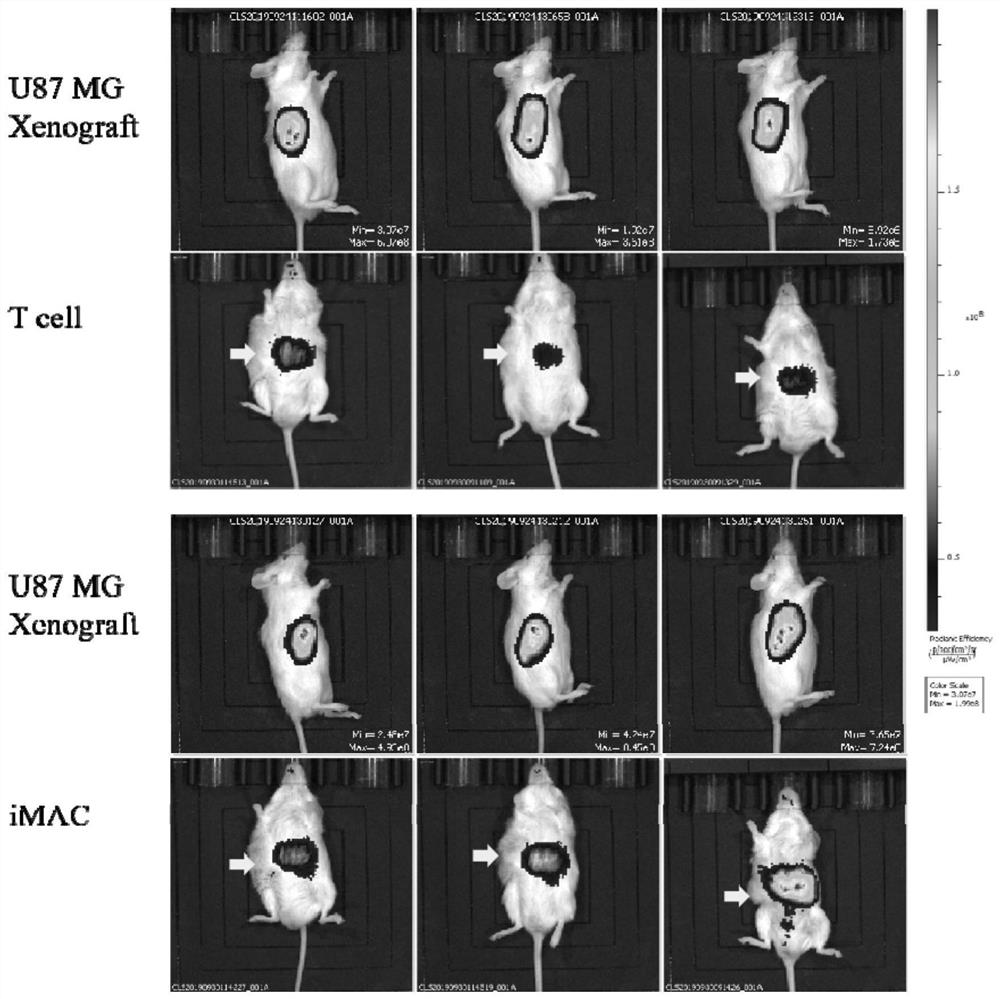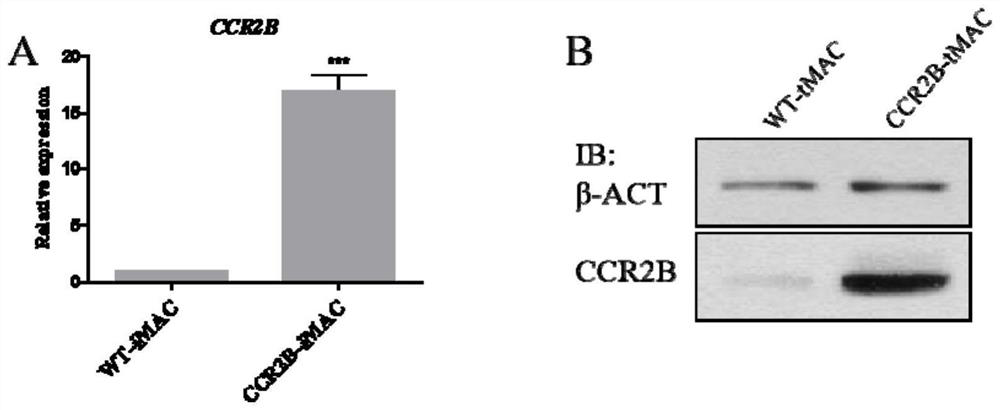Monocytes and macrophages with solid tumor-directed chemotaxis ability expressing chemokine receptors, and preparation and application thereof
A chemokine receptor, monocyte-macrophage technology, applied in the field of monocytes and macrophages, can solve the problem of difficult delivery of immune cells, improve specific killing efficiency and utilization, reduce non-specific Immunity to attack effects
- Summary
- Abstract
- Description
- Claims
- Application Information
AI Technical Summary
Problems solved by technology
Method used
Image
Examples
preparation example Construction
[0053] In a second aspect, the present invention provides a method for preparing macrophages, comprising the steps of: constructing a lentiviral expression system containing a chemokine receptor gene, and using the lentiviral expression system to integrate the chemokine receptor gene into multiple From stem cells or monocyte-macrophages, macrophages are prepared after induction and differentiation;
[0054] Preferably, the pluripotent stem cells are first induced to differentiate into monocytes, and then differentiated into macrophages.
[0055] The strategy of stably expressing the receptor CCR2B, which recognizes the chemokine CCL2 secreted by solid tumor cells, in the adoptive transplant iMAC / Macrophage through the lentiviral expression system can endow the immune cells with three abilities in clinical treatment: 1. Significantly improve their ability to The ability of chemotaxis and migration to solid tumors that can secrete chemokines such as GBM, thereby enhancing the sp...
Embodiment 1
[0067] Example 1 Secretion of chemokine CCL2 in different solid tumor cells
[0068] Analysis of data from the cancer cell database CCLE (Cancer Cell Line Encyclopedia) revealed that solid tumors, including GBM, mesothelioma, and renal cancer, secrete higher levels of the chemokine CCL2.
[0069] Further data mining and comparison of the database are carried out, and the results are as follows figure 1 As shown in A, it was found that the level of CCL2 secreted by GBM was significantly higher than that in normal brain tissue.
[0070] GBM cell lines (U87MG, U251 and LN229), ovarian cancer cell lines (OVCAR8 and HO-8910) and blood mononuclear macrophages (THP1) were cultured in vitro, and ELISA experiments were performed on the above cells respectively. The results are as follows figure 1 As shown in B, it can be seen that GBM cell lines (U87MG, U251 and LN229) highly express the chemokine CCL2, and its expression level is significantly higher than that of ovarian cancer cell ...
Embodiment 2
[0082] Inject 1 x 10 subcutaneously in the ventral side of immunodeficient NSG mice 6 A U87MG cell with the luciferase gene. After tumor formation, 1 × 10 were injected through the tail vein. 6 iMAC and T lymphocytes with fluorescent dyes. Five days later, in vivo imaging of mice showed that both iMAC and T lymphocytes that did not express the chemokine receptor CCR2B were concentrated in the liver of mice, and neither had the ability to migrate to the GBM site ( figure 2 ).
PUM
 Login to View More
Login to View More Abstract
Description
Claims
Application Information
 Login to View More
Login to View More - R&D
- Intellectual Property
- Life Sciences
- Materials
- Tech Scout
- Unparalleled Data Quality
- Higher Quality Content
- 60% Fewer Hallucinations
Browse by: Latest US Patents, China's latest patents, Technical Efficacy Thesaurus, Application Domain, Technology Topic, Popular Technical Reports.
© 2025 PatSnap. All rights reserved.Legal|Privacy policy|Modern Slavery Act Transparency Statement|Sitemap|About US| Contact US: help@patsnap.com



